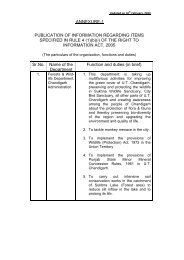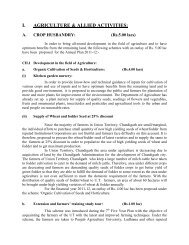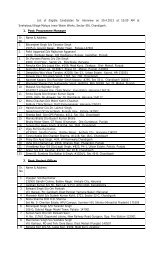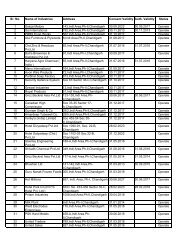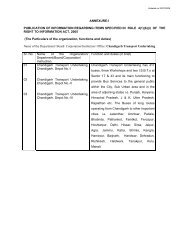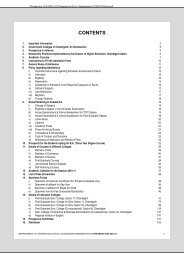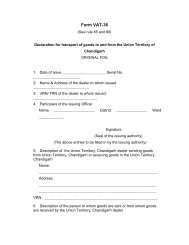Medicinal Plants of Chandigarh
Medicinal Plants of Chandigarh
Medicinal Plants of Chandigarh
Create successful ePaper yourself
Turn your PDF publications into a flip-book with our unique Google optimized e-Paper software.
SATAWAR<br />
Asparagus racemosus<br />
SHAM TULSI<br />
Ocimum tenuiflorum<br />
Habit<br />
Distribution<br />
Parts used<br />
: Straggling or scandent, much branched perennial Shrub, Flowers<br />
white.<br />
: Throughout India.<br />
: Roots and flowers.<br />
Habit<br />
Distribution<br />
Parts used<br />
: Aromatic herb, 30-90 cm high. Flowers purplish-pink.<br />
: Throughout India, Sri Lanka, W. Asia, Australia.<br />
: Leaves, seeds.<br />
Constitutes: Tuberous roots contains<br />
four saponins, viz. Shatavarin I to IV.<br />
S h a t a v a r i n i s g l y c o s i d e o f<br />
sarsasapogenin. Flower caontains<br />
quercetin, rutin & hyperoside.<br />
Therapeutic uses: It has also been<br />
identified as one drug to control the<br />
symptoms <strong>of</strong> AIDS. It is said to be tonic<br />
and diuretic and used as galactogogue<br />
& aphrodisiac. Dried tuberous roots<br />
has ulcer healing resistance or<br />
cytoprotection.<br />
Constitutes: Alkaloids, Glycosides,<br />
Saponins, Tannins, Ascorbic acid and<br />
Carotene.<br />
Therapeutic uses: It is regarded as a<br />
sacred plant, worshipped and used in<br />
several religious ceremonies; plant<br />
highly medicinal for fever, cold and<br />
cough; colitis, urinary troubles and<br />
vomiting; believed to be instant<br />
remedy <strong>of</strong> all types <strong>of</strong> disorders; <strong>of</strong>ten<br />
conserved.<br />
36 37



